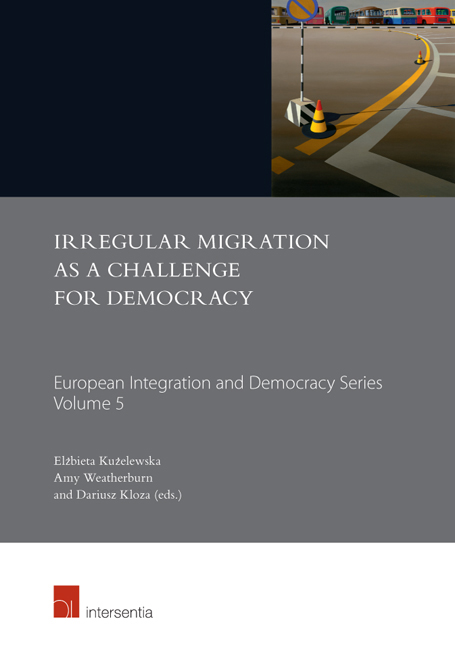Book contents
- Frontmatter
- Foreword
- Introduction
- Contents
- List of Abbreviations
- PART I The European Integration Project And Irregular Migration: Upholding Fundamental Values And Principles
- Part II Migrants, their Rights and the Limits Thereof
- Part III The Status Quo of Migration in Europe: Selected National Perspectives
- 10 The Governance of the Migrant Crisis in Italy (Invited Contribution)
- 11 The Impact of the Migration Crisis on Polish Immigration and Criminal Law
- 12 The Role of NGOs as Partners in Migration Management in Estonia: A Case Study
10 - The Governance of the Migrant Crisis in Italy (Invited Contribution)
from Part III - The Status Quo of Migration in Europe: Selected National Perspectives
Published online by Cambridge University Press: 12 October 2018
- Frontmatter
- Foreword
- Introduction
- Contents
- List of Abbreviations
- PART I The European Integration Project And Irregular Migration: Upholding Fundamental Values And Principles
- Part II Migrants, their Rights and the Limits Thereof
- Part III The Status Quo of Migration in Europe: Selected National Perspectives
- 10 The Governance of the Migrant Crisis in Italy (Invited Contribution)
- 11 The Impact of the Migration Crisis on Polish Immigration and Criminal Law
- 12 The Role of NGOs as Partners in Migration Management in Estonia: A Case Study
Summary
INTRODUCTION
The intensification of migrant flows from the Global South (from Africa and the Middle East in particular) in recent years has forced many European countries to realise that immigration is not a transitory condition, linked to single historical events such as the so-called Arab Spring, but a structural phenomenon to which Europe is called today to face up and to make long-term choices. In Italy, the relevance of this topic is further emphasised by its special geographic location, which makes the Peninsula the natural landfall for those who are escaping wars, famine, ethnic conflicts, religious persecution and other misery, looking for refuge and the hope of better living conditions. The aim of this chapter is to look into the legal impact of immigration from the Italian perspective. Section 2 will provide a historical overview of migration in Italy, both emigration and immigration. Taking into account recent experience, section 3 will outline the legislative developments that have occurred in the context of the ongoing migrant crisis with a view to making observations on issues that still need addressing in order to improve the reception and integration of migrants in Italy (section 4).
HISTORICAL PERSPECTIVES
Italy has been a land of emigration for decades. It has experienced three major waves. The first one, from the end of the nineteenth century to World War I, was brought about by the widespread poverty in the country (due to the demographic growth and the agrarian crisis). Triggered by the same causes, there was a second wave, occurring between the two World Wars, which was partly contained by the limitations of the fascist Government. The third wave, between the 1940s and 1970s, was less intense, but nevertheless hundreds of thousands of Italians moved to other European and non-European countries during this time. It is estimated that more than 20 million people have emigrated from Italy over the course of a century.
During the second half of the twentieth century, domestic economic growth has seen the drive for emigration fade away. Instead, since the 1990s, Italy has become a natural transitory or permanent destination for hundreds of thousands of migrants, seeking to either stay in the country or to reach – through Italy – other northern European countries.
- Type
- Chapter
- Information
- Irregular Migration as a Challenge for Democracy , pp. 181 - 190Publisher: IntersentiaPrint publication year: 2018



